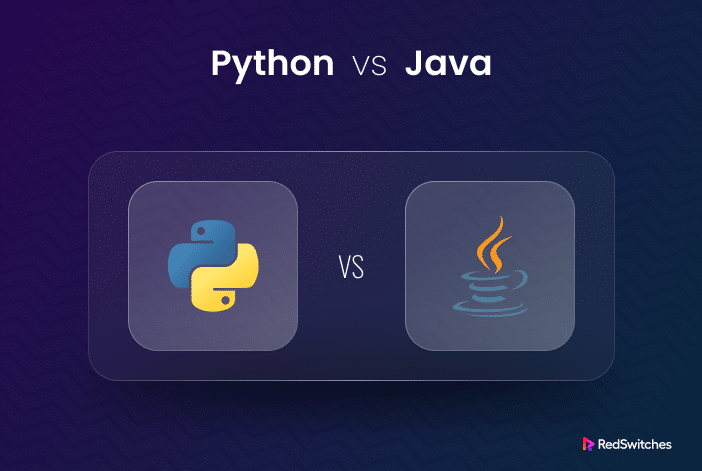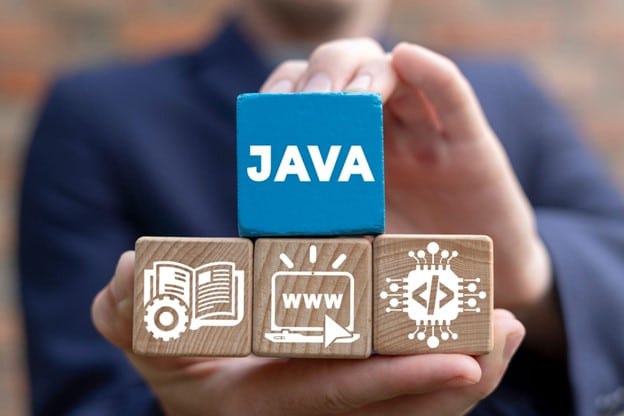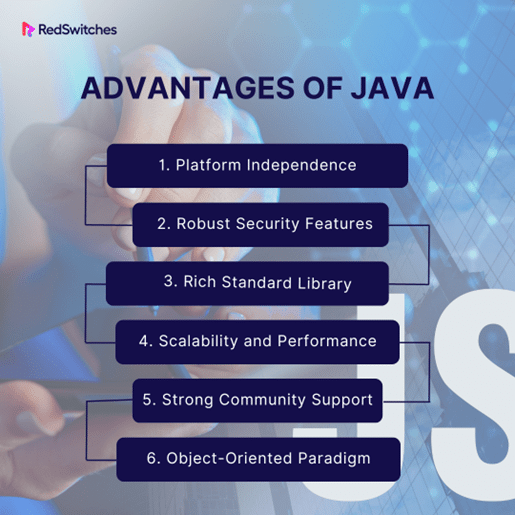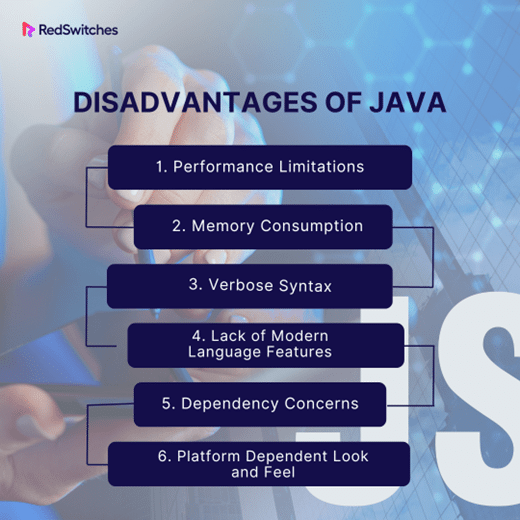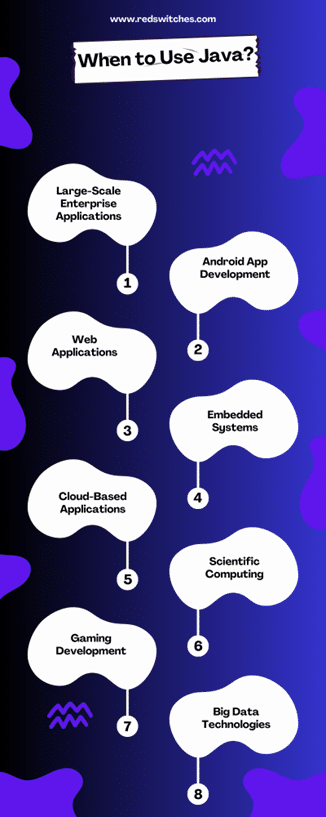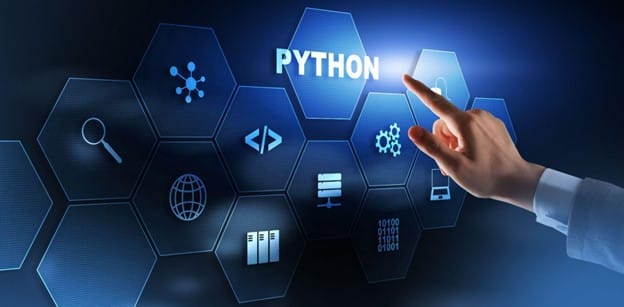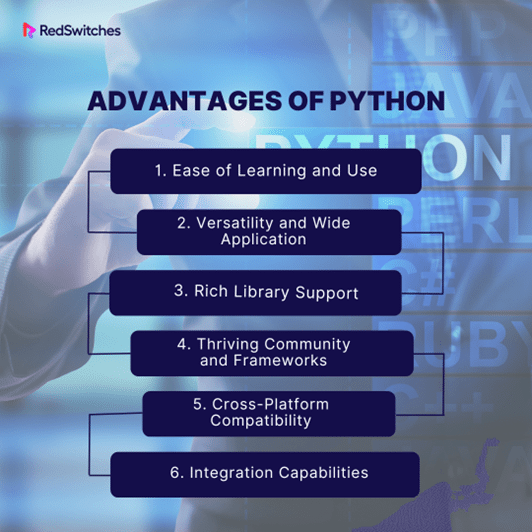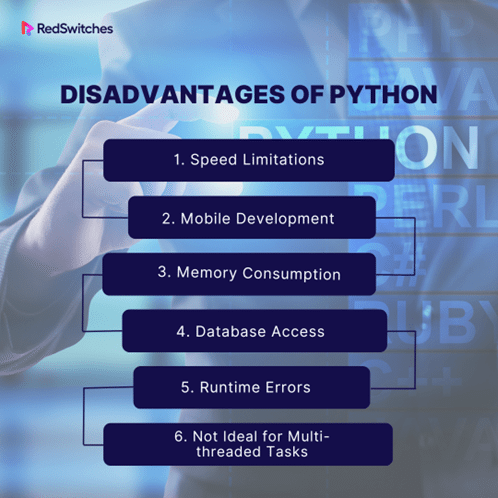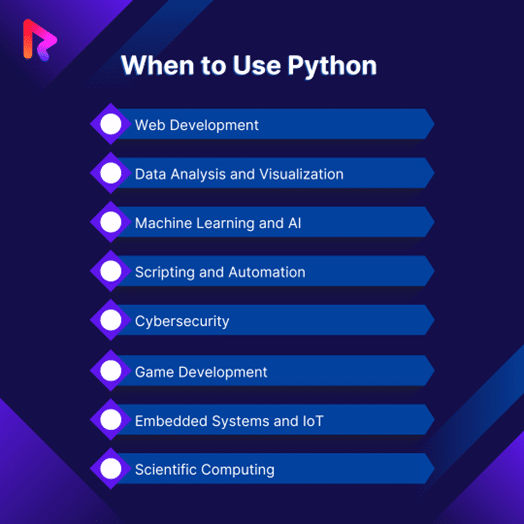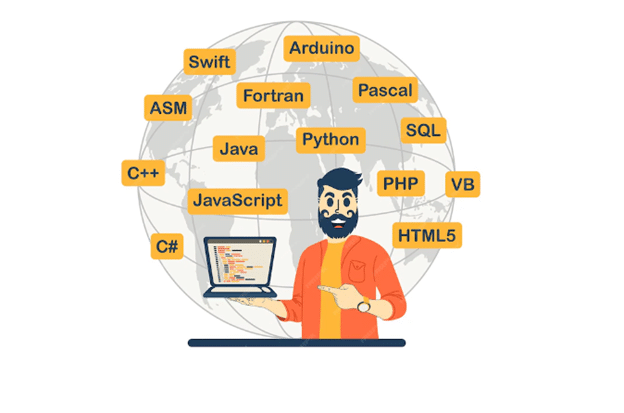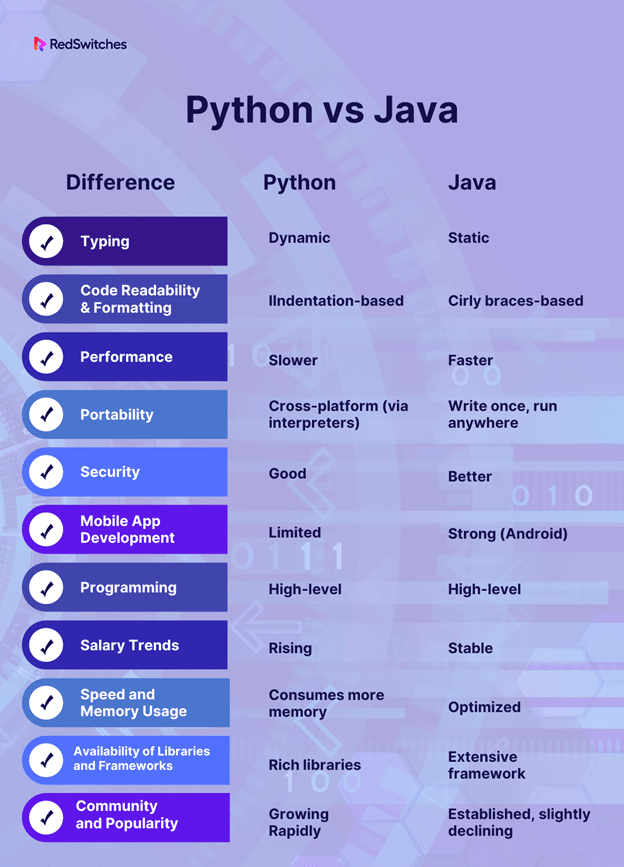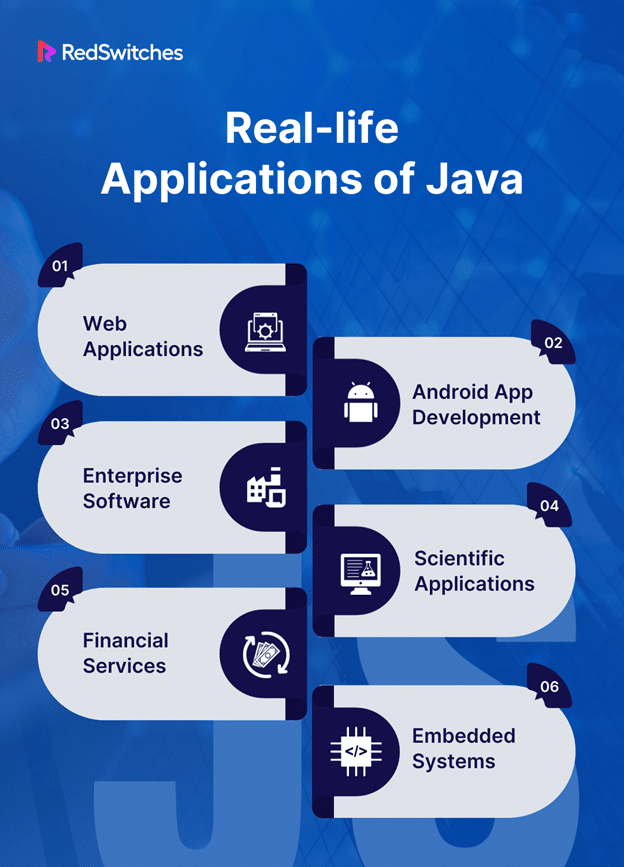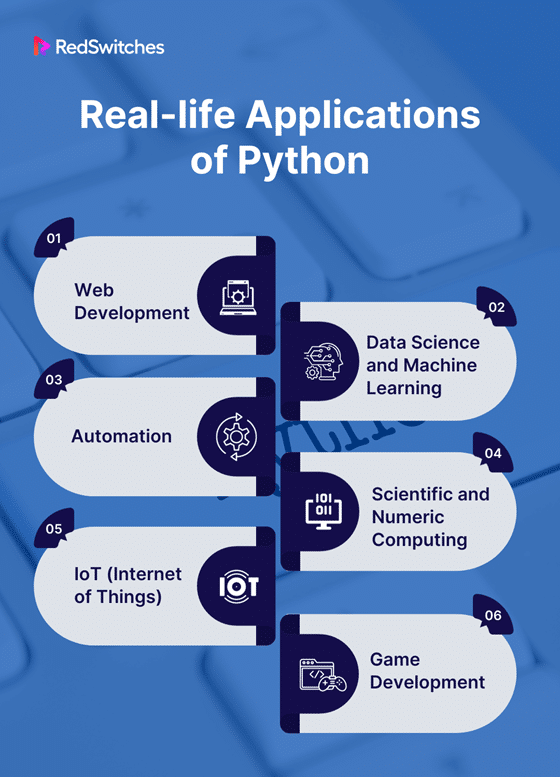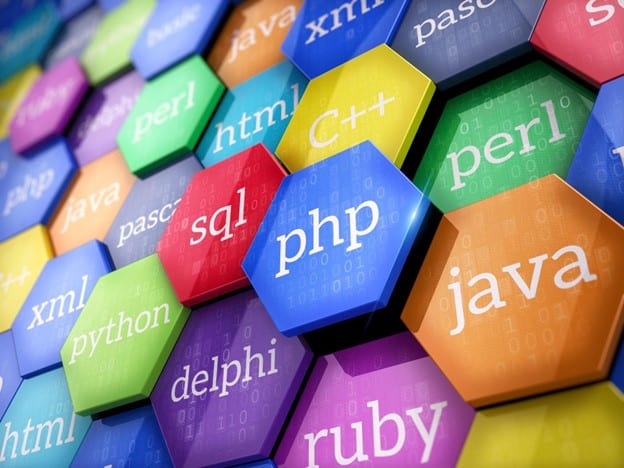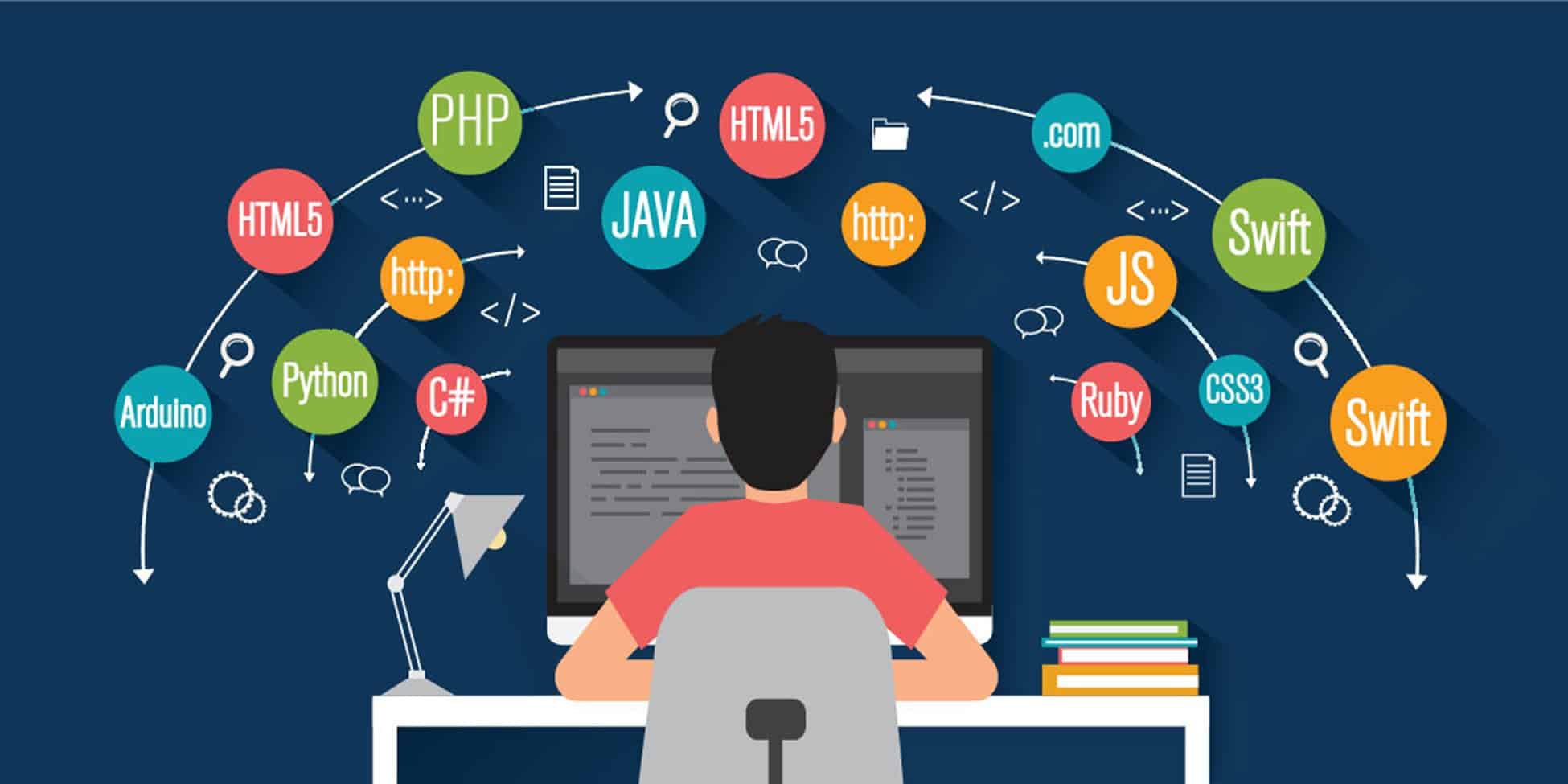Python vs Java, which to choose? The debate between Python and Java has persisted for years in the software development spectrum. Both languages are robust, and versatile, and have carved significant niches in several industries.
According to Statista, the most demanded programming languages by recruiters in 2022 were Java and Javascript, with around 40% of recruiters wanting to hire individuals with those programming skills. Python was rated third, with nearly 40% of respondents looking for this skill when recruiting.
As we venture into 2023, understanding the evolving Python and Java difference
becomes critical for both new and seasoned developers. Whether you aim to embark on a new project or consider which language to learn next, comparing Python vs Java differences will provide valuable insight.
Credits: Shutterstock
Let’s explore the difference between Java and Python.
Table of Contents
- What is Java?
- What is Python?
- Python vs Java Comparison: The Key Difference
- Real-Life Applications & Use Cases of Java
- Real-Life Applications & Use Cases of Python
- Which Is Harder: Python vs Java?
- Which Pays More: Java or Python?
- Conclusion – Python vs Java
- FAQs
What is Java?
Credits: Shutterstock
Before we discuss Python vs Java, it is important to explore their individual definitions.
Java is a high-level, class-based, object-oriented programming language for portability and versatility. Sun Microsystems initially developed it, which later merged with Oracle Corporation. Java is celebrated for its ‘write once, run anywhere’ capability.
The compiled Java code can run on all platforms supporting Java without recompilation. It is widely used for developing mobile apps, desktop software, web applications, and large-scale enterprise systems.
Advantages of Java
Below are the advantages of Java:
Platform Independence
Java empowers developers to write code on one platform and run it on another with a Java Virtual Machine (JVM). This diminishes the need for platform-specific adaptations and streamlines software distribution.
Robust Security Features
Java provides a secure execution environment with built-in security features, including bytecode verification, API for secure data operations, and run-time security checks. These aspects make Java a go-to pick for critical applications where data protection is necessary.
Rich Standard Library
Java offers an extensive library covering data structures, file handling, network protocols, algorithms, etc. This library helps minimize the development time, ensuring consistent and optimized functionality.
Scalability and Performance
Java has tools and features, such as the Just-in-Time feature, that help optimize performance. Its multi-threading capability and powerful memory management allow applications to scale efficiently, catering to many users.
Strong Community Support
Java features a vast and active developer community. This extensive community ensures continuous improvements and regular updates and offers a rich resource of libraries, tools, and frameworks.
Object-Oriented Paradigm
Java’s object-oriented design promotes modular programming and code reuse. This makes the codebase more maintainable, organized, and adaptable to alterations, offering a systematic approach to software development.
Disadvantages of Java
Below are the disadvantages of Java:
Performance Limitations
Although the programming language ‘Write Once, Run Anywhere’ motto makes it highly portable, this comes at a significant cost. Java applications run on the Java Virtual Machine (JVM). This machine can be slower than natively compiled languages. In some instances, the intermediary bytecode interpretation by the JVM can lead to slowed performance.
Memory Consumption
Java applications are often criticized for their significant memory consumption. The inherent architecture of the Java Runtime Environment (JRE) and the garbage collection mechanism can lead to higher RAM usage, which might be inefficient for memory-constrained systems.
Verbose Syntax
Java’s syntax is often verbose, especially compared to Python or Kotlin. This verbosity can lead to extended development times, enhanced risk of bugs, and can be overwhelming for novices trying to understand the language.
Lack of Modern Language Features
Although Java has developed and improved over the years, it has limitations in adapting to modern programming concepts. Features like pattern matching, type interference, or advanced functional programming constructs are found more natively in newer languages.
Dependency Concerns
Java’s ecosystem relies heavily on third-party frameworks and libraries. Managing these dependencies, ensuring compatibility, and keeping track of updates can become complicated, especially for extensive projects.
Platform Dependent Look and Feel
Java’s GUI libraries, like Swing or AWT, cannot always mimic the native look and feel of the underlying operating system. Java applications may look or behave differently across platforms, negatively impacting user experience.
Read More: How Object-Oriented Databases Add Value To Business Operations.
When to Use Java
Java has become an indispensable tool in programming languages; it may only apply in some situations. This makes it important for programmers to understand when it is best to use Java. Below are a few scenarios where Java shines the brightest:
Large-Scale Enterprise Applications
Java Enterprise Edition (Java EE) is a powerful ecosystem for building large-scale, distributed enterprise applications. With the help of frameworks like Spring, Java offers a scalable environment for developing complex, transaction-heavy systems like ERP, CRM, and more.
Android App Development
Java is the primary language for Android app development. It is a natural choice for individuals looking to build a mobile app for the world’s most popular mobile OS. The Android SDK offers Java libraries and tools, enabling developers to craft feature-rich applications for varying Android devices.
Web Applications
Java offers a wide range of technologies, including Servlets, JSP, and frameworks like Spring MVC and JSF, ideal for building scalable web applications. Sites with high concurrent user interactions often use Java’s capabilities for reliable performance.
Embedded Systems
With its compact and efficient Java ME (Java Platform, Micro Edition), Java is ideal for embedded systems. Devices like blue-ray disks, SIM cards, and utility meters, which demand a lightweight and compact application environment, benefit from Java’s platform-independent nature.
Cloud-Based Applications
Java’s portability and scalability make it an excellent choice for cloud-based applications. The programming languages’ ability to run anywhere ensures that cloud applications built using Java can be easily migrated or scaled across various server environments.
Scientific Computing
Although languages like Python have gained popularity in scientific computing, Java remains a highly reliable choice due to its performance optimization capabilities and substantial libraries. Java’s strong mathematical operations and JVM’s optimizations make it best-suited for hefty computational tasks.
Gaming Development
Java-based games, especially those on Android, have significantly increased. The programming language can render high-speed graphics using libraries and tools like LWJGL (Lightweight Java Game Library), enabling developers to produce immersive games.
Big Data Technologies
Several big data technologies, like Hadoop, have been written in Java. Java features a remarkable ability to handle large datasets and perform complex operations. This has made it stand tall among the leading big data analytics and processing languages.
What is Python?
Credits: Shutterstock
Python is a high-level, interpreted programming language recognized for its clear syntax and versatility. It was birthed by Guido van Rossum and first released in 1991. Python stresses code readability, enabling developers to express complex ideas with fewer lines of code. It supports multiple programming paradigms, such as procedural, object-oriented, and functional programming.
Due to its simplicity and ease of learning, Python has become a popular choice for beginners. Its powerful libraries and frameworks make it a highly sought-after language for various applications, from web development to data analysis and artificial intelligence.
Advantages of Python
Below are some of the key advantages of Python:
Ease of Learning and Use
Python’s syntax is straightforward and intuitive. This makes it an excellent language for beginners. The simplicity of its code structure emphasizes readability and minimizes the cost of program maintenance.
Versatility and Wide Application
Python is a multi-paradigm language supporting object-oriented, procedural, and functional programming styles. Its flexibility makes it best for countless applications, including web and internet development and desktop GUI programming.
Rich Library Support
Python’s extensive standard library empowers developers to implement a wide variety of functionalities without the need for external modules. This accelerates the development process and reduces the reliance on third-party tools.
Thriving Community and Frameworks
Python boasts a large and active community contributing to its vast array of frameworks and tools. This support ecosystem not only helps developers resolve issues but also ensures the ongoing evolution of the language.
Cross-Platform Compatibility
Python is inherently platform-independent. This means code written in Python can run on various operating systems without the hassle of modifications. This universality adds a new layer of simplicity in terms of deployment and extends the potential user base.
Integration Capabilities
Python can easily integrate with different languages, making it a versatile choice for mixed-environment development projects. Its compatibility with diverse integration mechanisms, like RESTful services and SOAP, further extends its application scope.
Disadvantages of Python
Below are the disadvantages of Python:
Speed Limitations
Python is inherently slower than some compiled languages. This is because it is an interpreted language, which means code execution happens line by line, potentially affecting the speed of real-time applications or high-computing tasks.
Mobile Development
Although Python can be used for mobile app development, it isn’t a preferred choice by experts. Instead, they prefer languages like Swift for iOS or Java for Android. Python lacks the native tools and libraries essential for mobile platforms.
Memory Consumption
Python’s memory consumption is relatively high due to its flexibility. Its dynamic typing nature and garbage collection processes can cause substantial memory overhead, negatively impacting the performance of applications.
Database Access
Python has limitations when it comes to database access. Unlike popular technologies like ODBC and JDBC, Python’s database access layer is slightly underdeveloped and primitive. This makes it less efficient.
Runtime Errors
Python is susceptible to runtime errors because of its dynamically typed nature. The code might look fine during development, but errors can emerge during execution since variable types are only checked at runtime.
Not Ideal for Multi-threaded Tasks
Python’s Global Interpreter Lock (GIL) ensures that only one thread gets executed at a time. This makes Python unsuitable for applications that require intensive multi-threading or concurrent processing.
When to Use Python
Python is a favorite tool for beginners that seasoned developers and tech giants rely heavily on. But when exactly should one turn to Python? Below are eight common uses for this programming language:
Web Development
Python’s easy-to-read syntax and sizeable libraries make it an excellent choice for web development. Frameworks like Flask, Django, and Pyramid enable developers to create powerful, scalable, and secure web applications. Renowned sites like Instagram, Pinterest, and even NASA’s official site use Python for their backend operations.
Data Analysis and Visualization
Python offers libraries like Pandas and NumPy for data enthusiasts that help simplify data manipulation, analysis, and mathematical computations. Libraries like Matplotlib and Seaborn allow developers to visualize this data and create a variety of plots and graphs to represent information in an easy-to-understand format.
Machine Learning and AI
Python have positioned themselves at the forefront of artificial intelligence and machine learning, with libraries like TensorFlow, Keras, and Scikit-learn, implementing neural networks, building models, and analyzing vast amounts of data.
Scripting and Automation
Python’s efficiency shines in scripting and automating repetitive tasks. It adds an effortless touch to tasks like automating file management, web scraping, or updating spreadsheets; Python’s vast array of libraries and concise syntax make the job effortless.
Cybersecurity
Python is an invaluable asset in terms of cybersecurity. It aids in producing scripts to detect network vulnerabilities, perform forensic analysis, or even develop malware and ethical hacking tools.
Game Development
While Python might not be the first language that comes to mind for game development, frameworks like Pygame provide a platform for game enthusiasts to develop and experiment with simple 2D games.
Embedded Systems and IoT
Python has been stretching its domain into the Internet of Things (IoT) and embedded systems. MicroPython and CircuitPython are Python’s adaptations for microcontrollers, allowing developers to bring Python’s simplicity to devices such as Raspberry Pi.
Scientific Computing
Python is utilized for scientific computing in the fields of meteorology, astrophysics, and biology. Libraries like SciPy provide optimization, integration, and linear algebra modules, helping researchers and scientists in their work.
Debating between Python and PHP? Read our informative blog, ‘Python vs PHP: How To Choose The Best Language For Your Projects?‘.
Now that we have discussed the definitions, pros and cons, and use cases of Python vs Java, let’s explore their key differences.
Python vs Java Comparison: The Key Difference
Credits: FreePik
Python and Java are two of the most popular and widely used languages in programming. While both function as programming languages, they have distinct features and differences.
This makes it important for programmers to understand the difference between Java and Python to help them make informed decisions. Below are the key differences between Python vs Java:
Typing
Below is a comparison of the difference between Python vs Java in terms of typing:
Python
Python is dynamically typed. This means the variable type is determined at runtime, not in advance. This leads to a smoother and faster coding process since you don’t have to declare the variable type when you write the code. This can also sometimes lead to runtime errors if data of the wrong type is assigned to a variable or used in an operation.
Java
Java is statically typed. Every variable must be declared with its data type before it can be used, and once declared, its data type can’t be altered. While this can generate a slightly more verbose coding process, it allows errors to be caught at the compile time, helping ensure that type-related errors are reduced during runtime.
Code Readability & Formatting
Below is a comparison of the difference between Python vs Java in terms of code readability and formatting:
Python
Python places a significant emphasis on code readability. It employs a clear and concise syntax, so it’s often recommended for beginners. Using indentation to define code blocks ensures that Python code is clean and easily readable. This characteristic is encapsulated in the Zen of Python, which states, among other things, ‘Readability counts.’
Java
Java, while powerful, tends to be more verbose than Python. This means that Java often requires more lines of code for the same functionality. Java uses braces {} to define the beginning and end of each function and class definition, which can lead to the ‘pyramid of doom’ due to deep nesting. Java’s clear structure and object-oriented nature mean that with good coding practices, Java code can be highly readable.
Performance
Below is a comparison of the Python vs Java performance difference:
Python
Python is an interpreted language, which generally means it is slower than compiled languages. While Python code is more straightforward to write and read, this simplicity comes at the cost of performance. The difference in speed isn’t always prominent for small to medium-sized applications, and Python offers several tools and libraries to accelerate code execution.
Java
Java is compiled to bytecode and runs on the Java Virtual Machine (JVM). This allows Java to be platform-independent while leveraging compiled languages’ speed advantage. Java is faster in execution than Python. Its performance can also be enhanced using Just-In-Time (JIT) compilers and several optimizations offered by the JVM.
Portability
Below is a comparison of the difference between Python vs Java in terms of portability:
Python
Python code is highly portable. You can run a Python script on any operating system with the appropriate environment setup. This portability relies heavily on the Python interpreter. If a system doesn’t have the required interpreter installed, then the Python code cannot run. There’s also the likelihood of dependencies; specific Python libraries may not be supported or behave differently on some systems.
Java
Java achieves portability through its Java Virtual Machine (JVM). Once you compile your Java code, it gets converted to bytecode, which can then be executed by the JVM on any platform without modification. This means as long as a platform has a JVM implementation, Java applications can run effortlessly, making it highly portable.
Security
Below is a comparison of the difference between Python vs Java in terms of security:
Python
Python is generally considered secure, but it’s not without its vulnerabilities. The open-source nature of Python means that the community often identifies and patches security flaws rapidly. Many of Python’s security vulnerabilities come from third-party packages or when integrating with external systems. Developers must stay updated with the latest versions and be cautious of the packages they use.
Java
Java has a solid security framework, especially within its runtime environment. The JVM plays a major role in providing a security manager and bytecode verifier. The language itself has various built-in security features, such as bytecode checking and runtime security checks.
Java has been highlighted for security vulnerabilities, especially in its browser plugins. Java developers must be proactive by keeping the Java runtime environment updated and following all best security practices.
Credits: Shutterstock
Mobile App Development
Below is a comparison of the difference between Python vs Java in terms of mobile app development:
Python
When it comes to mobile app development, Python isn’t the first language that comes to mind. While Python offers frameworks like Kivy and BeeWare that allow for mobile app development, it’s not as smooth or efficient as other languages developed. The apps might also not have the performance and responsiveness seen in those developed with native languages.
Java
Java is a heavyweight in mobile app development because of its relationship with Android. The Android SDK uses Java, making it the primary language for developing Android apps. Java’s robustness, efficiency, and portability make it an excellent choice for creating feature-rich, high-performance mobile applications.
Programming
Below is a comparison of the difference between Python vs Java in terms of programming:
Python
Python syntax is clean and designed to be easy to read, making it especially friendly for beginners. It is dynamically typed, meaning you don’t have to declare the datatype of a variable when you create it.
Java
Java is a compiled, object-oriented programming language. Its WORA philosophy helps ensure that compiled Java code can run on all platforms without recompilation. Java is statically typed, meaning you must declare a variable’s datatype when you create it.
Salary Trends
Below is a comparison of the difference between Python vs Java in terms of salary trends:
Python
Python has grown in popularity in the last few years, particularly in data science, artificial intelligence, and web development. Due to this, Python developers, especially those with expertise in these areas, have seen competitive salary packages and numerous job opportunities.
Java
Java has been a staple in the enterprise world since its inception. It powers many large-scale systems and applications, from Android apps to web servers. Java developers have consistently been in demand and command high salaries, especially those with experience in large-scale system development or Java-based mobile app creation.
Speed and Memory Usage
Below is a comparison of the difference between Python vs Java in terms of speed and memory usage:
Python
Python is generally slower than Java. This is primarily because it’s an interpreted language that executes code more slowly than compiled languages. In terms of memory, Python’s dynamic typing may use up more memory than statically typed languages, as it needs to store additional information about variable types.
Java
Java often outperforms Python in terms of speed, especially in scenarios where high performance is required, like in gaming applications or high-frequency trading platforms. While Java’s Just-In-Time (JIT) compiler optimizes the bytecode at runtime, further improving its performance, applications may consume more memory, primarily because of Java Virtual Machine (JVM) overhead.
Availability of Libraries and Frameworks
Below is a comparison of the difference between Python vs Java in terms of the availability of libraries and frameworks:
Python
Python boasts various libraries and frameworks catering to several domains. Whether web development with Django or Flask, data analysis with Pandas and NumPy, or AI and machine learning with TensorFlow and PyTorch – Python has it all. The Python Package Index (PyPI) is a repository that houses a plethora of packages catering to diverse needs, making development in Python relatively seamless.
Java
Java features a rich ecosystem, providing robust frameworks like Spring for web and enterprise applications, Hibernate for database operations, and Maven for dependency management. The extensive standard Java library and other community-contributed libraries ensure that Java can handle various developmental requirements.
Community and Popularity
Below is a comparison of the difference between Python vs Java in terms of community and popularity:
Python
Python popularity has significantly grown, owing to its applications in emerging fields like data science and machine learning. The extensive Python community is always active, contributing to the language’s evolution and offering support. The annual PyCon conference draws enthusiasts from the entire globe, showcasing Python’s global appeal.
Java
Java’s enduring popularity cannot be understated. Since its creation, it has maintained a dominant position in the industry. The Java community is vast, with countless forums, groups, and conferences dedicated to the language. The annual JavaOne conference is a testament to its lasting impact and vast user base. Java’s longevity and consistent updates ensure it remains relevant in an ever-evolving tech landscape.
Table 1: Python vs Java Differences Comparision
Also Read: Discovering the Best Linux IDEs: Our Top 10 Recommendations.
Real-Life Applications & Use Cases of Java
Let’s explore the diverse real-life applications of the two giants, Java and Python:
Web Applications
Java’s inherent capabilities shine through in web application development. Renowned platforms, including LinkedIn and AliExpress, leverage Java’s potential for their backend operations. With powerful frameworks like Hibernate, Spring, and Struts, Java ensures smooth, dynamic, and responsive web interfaces.
Android App Development
Java’s influence in the mobile app landscape is undebatable. Most Android applications use Java, including giants like Uber, Twitter, and Spotify. Its stability and scalability make it a go-to choice for dynamic app development.
Enterprise Software
Java plays an important role in the corporate sector. Renowned tech corporations like IBM and Oracle have laid their foundation on Java to develop intricate client-server applications, solidifying its position among enterprise-grade solutions.
Scientific Applications
Java isn’t just limited to commercial uses. Institutions like the European Space Agency have trusted Java for critical software development for their satellite missions. Java’s accuracy and reliability are vital for complex scientific computations.
Financial Services
The finance sector, known for its intricate and sensitive operations, leverages Java for algorithmic functions and electronic trading systems. Its robust nature and secure environment make it a popular pick.
Embedded Systems
Java, particularly its ME (Micro Edition) variant, is used in embedded systems owing to its portability and scalability. Blu-ray disc players and SIM cards in many mobile phones use embedded Java to fuel applications.
Real-Life Applications & Use Cases of Python
Web Development
Python’s simplicity is its primary asset. With massive user bases, digital platforms like Instagram and Pinterest are powered by Python. Frameworks like Django and Flask make development and iterations faster and more efficient.
Data Science and Machine Learning
The world’s increasing reliance on data-driven decisions sees Python at the forefront. Its extensive library system, including TensorFlow, Scikit-learn, and PyTorch, provides unparalleled machine learning model development support. This is evident as streaming companies like Netflix leverage Python’s capabilities for their recommendation engines.
Automation
Efficiency is the main focus in today’s fast-paced world. Dropbox, a leader in cloud storage, utilizes Python for its client and server-side operations, facilitating smooth file synchronizations and automated tasks.
Scientific and Numeric Computing
Python’s prowess extends to the scientific arena. Researchers and scientists use specialized libraries like NumPy, SciPy, and Pandas for numeric analysis, data manipulation, and computational tasks.
IoT (Internet of Things)
As the world becomes more connected, Python finds its place in IoT. Platforms, notably Raspberry Pi, rely on Python for device operations, paving the way for an interconnected and smart world.
Game Development
While Python might not be the first name in hardcore game development, its Pygame library is a testament to its capabilities. Ideal for learning and developing entry-level games, Python ensures interactive and engaging game dynamics.
Also Read: Everything You Need to Know About Virtual Machines and Cloud Computing.
Which Is Harder: Python vs Java?
Credits: Shutterstock
One common query beginner developers ask is: Which is harder, Python vs Java? Let’s explore this debate.
Historical Context
Java was designed to be a general-purpose, object-oriented language. Its ‘write once, run anywhere’ philosophy made it incredibly popular for business and enterprise applications.
Python came into being in the late 1980s. It was intended to be an easily readable and powerful language, emphasizing code readability and simplicity.
Syntax and Readability
One of the first things novices notice about Python is its clean and readable syntax. It employs indentation (whitespace) to define code blocks, making it almost like reading pseudocode. This makes Python beginner-friendly, allowing novices to focus on understanding programming concepts without getting bogged down by complex syntax.
Java’s syntax is more verbose. With its strict rules and necessity for defining classes and methods, even for simple programs, beginners might find Java slightly intimidating initially.
Object-Oriented vs. Multi-paradigm
Java is strictly object-oriented. It is based around objects, and even simple programs require class definitions. This can be both an advantage and a drawback. For beginners, it introduces them early to object-oriented programming (OOP) concepts but adds an extra layer of complexity for simple tasks.
Python, while supporting OOP, is multi-paradigm. You can write procedural, object-oriented, or functional code, giving learners flexibility and options in their coding style. This can simplify the learning curve considerably.
Development Environment
Java requires a more involved setup. You’ll need the Java Development Kit (JDK) and often an Integrated Development Environment (IDE) like Eclipse or IntelliJ IDEA. While these tools are powerful, setting them up and getting used to them can be a task for beginners.
Python often just works right out of the box. Many systems come with Python pre-installed, and its interactive shell allows immediate feedback for beginners. Tools like IDLE or Jupyter Notebooks make Python programming and debugging a breeze for newcomers.
Community and Resources
Both Java and Python have vast communities, meaning abundant learning resources – books, tutorials, online courses, and forums. With the recent boost in Python’s popularity due to its dominance in emerging fields, a more contemporary set of beginner-friendly resources might be available for Python.
Performance and Application
Java is generally faster than Python in execution, thanks to its compiled nature. This could mean that Java might be best suited for large-scale applications or systems where performance is crucial. Understanding such intricacies could make learning Java slightly more challenging.
Python’s slower execution speed is often offset by its rapid development capabilities, making it a favorite for startups and prototyping.
Are you wondering how to find the length of a list in Python? Read our informative blog, ‘How to Find the Length of a List in Python: Three Easy Methods and Tips’ for answers.’
Which Pays More: Java or Python?
Credits: Shutterstock
Developers often wonder which of these two languages, Python vs Java, can offer a more lucrative career path. Let’s decipher which language, Java vs Python, generally results in higher paychecks.
Salary Trends
Many factors, including experience, geographic location, domain of expertise, and the specific needs of the hiring company, play a role in determining salary.
- Java Developers: According to the S. Bureau of Labor Statistics, the median annual wage for Java developers is $124,200, especially for those involved in enterprise-level Android mobile app development. Renowned tech companies that use Java offer higher salaries and comprehensive benefits.
- Python Developers: According to Builtin, a Python developer earns around $114,144 in the US. Python’s role in data science and machine learning has skyrocketed the demand for Python developers. In these domains, professionals often command significant salaries, sometimes surpassing their Java counterparts. Web developers using Python earn competitive salaries but might not always out-earn Java developers in similar roles.
Industry Demand
Both languages have experienced a significant rise in demand:
- Java: The enterprise world, massive corporations, and financial institutions rely heavily on Java. Its stability and scalability make it an ideal choice for large systems and applications. With Android being the dominant mobile OS globally, there’s a steady demand for Java developers in the mobile app sector.
- Python: The tech industry’s current fondness for data science, AI, and machine learning has made Python developers highly sought after. Being on the cutting edge of technology, these fields often come with lucrative compensation packages. The startup ecosystem’s preference for Python due to its rapid development capabilities further bolsters demand.
Skill Specialization
A developer’s pay is often commensurate with their specialization:
- Java: Java developers specializing in high-frequency trading systems, complex enterprise software, or advanced Android app development can command a premium.
- Python: Python developers focusing on deep learning, AI modeling, or advanced data analytics might find themselves at the higher end of the pay scale.
Future Prospects
Both languages have strong trajectories:
- Java: While Java’s growth isn’t as explosive as in its early days, its established presence ensures that skilled Java developers will continue to be in demand, especially with continuous updates and the evolution of the language and platform.
- Python: Python’s growth curve, especially in emerging fields like AI, suggests that its demand (and potentially the salaries of its developers) will continue to rise in the foreseeable future.
Conclusion – Python vs Java
After comparing the core differences between Python vs Java, it’s evident that both languages have their individual unique strengths and applications. The choice between the two often depends on the specific needs of a project, personal preference, or the domain in which one is working.
Regardless of your chosen language, reliable hosting lays the foundation of any successful application or project. RedSwitches offers optimized solutions tailored for Python and Java applications, ensuring your projects are well-coded and well-hosted. Dive deeper into our services to give your applications the robust, scalable, and secure environment they deserve.
FAQs
Q. Which is better, Java or Python?
In the debate of Python vs Java, the answer depends on the specific context and goals. Java is widely used in large enterprise applications and offers a strong foundation for backend development. Python boasts simplicity and versatility, making it a preferred choice for artificial intelligence, web development, and scripting. Both languages are robust and have their own advantages and applications.
Q. Should I learn Python or Java in 2023?
When considering Python vs Java in 2023, both remain highly relevant and valuable in the job market. Python has gained immense popularity due to its ease of learning and diverse applications in data science, machine learning, and web development. Java dominates the world of mobile app development. Your learning decision should align with your career goals and the specific domains you’re interested in.
Q. What are the key differences between Java and Python?
Java is a statically typed, compiled language, while Python is a dynamically typed, interpreted language. Java is more verbose and requires more boilerplate code, whereas Python is known for its simplicity and readability.
Q. Which is easier to learn, Java or Python?
Python is generally considered to be easier to learn compared to Java. Its concise syntax and easy readability make it a popular choice for beginners.
Q. What are some popular use cases for Java and Python?
Java is widely used for developing enterprise applications, Android apps, and large-scale distributed systems. Python is popular for web development, data analysis, artificial intelligence, and scientific computing.
Q. Can Python be used for machine learning and data science?
Yes, Python is heavily utilized in the fields of machine learning and data science. Its extensive libraries, such as TensorFlow, scikit-learn, and PyTorch, make it a preferred language for these domains.
Q. Are there any major differences in performance between Java and Python?
Yes, Java is typically faster than Python due to its statically typed nature and the way it compiles to bytecode. Python, being an interpreted language, can be slower in certain computational tasks.
Q. What are some popular frameworks and libraries available for Java and Python?
Java has popular frameworks such as Spring, Hibernate, and Spark, while Python is known for frameworks like Django, Flask, and NumPy for scientific computing.
Q. Can you provide some code examples in Java and Python for comparison?
Sure, here’s a simple “Hello, World!” program in Java: “`java public class HelloWorld { public static void main(String[] args) { System.out.println(“Hello, World!”); } } “` And the equivalent program in Python: “`python print(“Hello, World!”) “`
Q. In what ways does Java differ from Python in terms of programming paradigms and language features?
Java is known for its strong support for object-oriented programming, while Python supports multiple programming paradigms, including object-oriented, imperative, and functional programming.
Q. Can Python and Java be used for database connectivity?
Yes, both languages support database connectivity. Java has JDBC (Java Database Connectivity), while Python has libraries like SQLAlchemy and Django ORM for interacting with databases.
Q. Which language is more widely used in the industry, Java or Python?
Both Java and Python are widely used in the industry, with Java being prevalent in enterprise applications and systems, and Python gaining popularity in web development, data science, and artificial intelligence.
